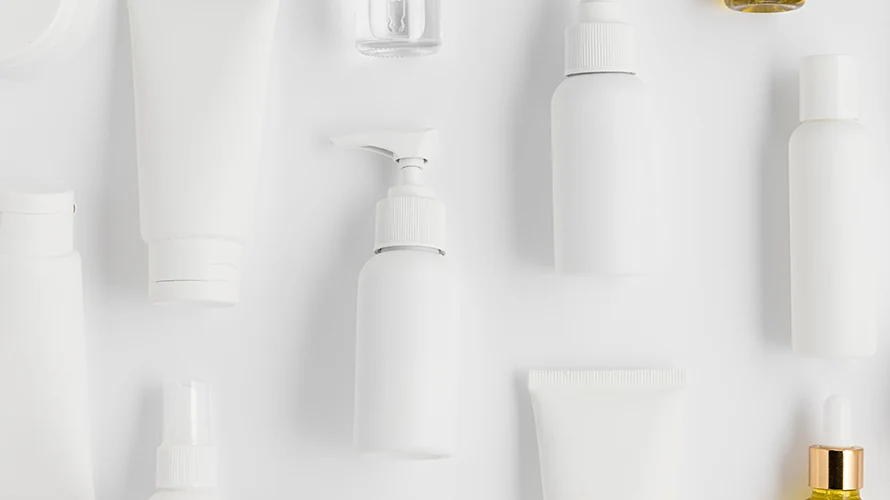A quick overview of the topics covered in this article.
- Шағын бизнес үшін косметикалық қаптаманың маңызы
- Мақсатты аудиторияны түсіну
- Брендинг және хабар алмасу
- Қаптама материалдары және дизайны
- Қаптама мөлшері мен пішіні
- Таңбалау және ақпарат
- Шығындарды ескеру
- Тестілеу және прототиптеу
- Жеткізушіні таңдау
- Теңшеу және Даралау опциялары
- Практикалық және функционалдылық
- Нормативтік сәйкестік
- Өнім желілеріндегі бренд сәйкестігі
- Өнім желілеріндегі бренд сәйкестігі
- Тұрақтылық және экологиялық жауапкершілік
- қорытынды
- Жиі қойылатын сұрақтар
Subscribe to the UKPACK newsletter to receive regular updates on the company, products, services, upcoming exhibitions and more.
As a small business in the cosmetics industry, one of the crucial factors that can contribute to your success is the packaging of your products. The right cosmetic packaging not only protects your products but also serves as a powerful marketing tool that can attract customers and communicate your brand’s values.
In this article, we will explore the key considerations when choosing cosmetic packaging for your small business, helping you make informed decisions that align with your brand and appeal to your target audience.
Importance of Cosmetic Packaging for Small Businesses
In the competitive world of cosmetics, packaging plays a vital role in capturing the attention of potential customers. A well-designed and thoughtfully crafted package can make your product stand out on the shelves and create a lasting impression. It serves as a visual representation of your brand and communicates the essence of your product. Therefore, it is crucial for small businesses to invest time and effort into selecting the right cosmetic packaging that reflects their brand identity and resonates with their target market.
Understanding the Target Audience
Before diving into the world of cosmetic packaging, it is essential to have a clear understanding of your target audience. Identify the demographics, preferences, and purchasing behavior of your ideal customers. By understanding their needs and desires, you can tailor your packaging to appeal directly to them. For example, if your target audience is environmentally conscious, opting for eco-friendly packaging materials can enhance their perception of your brand.
Branding and Messaging
Establishing a robust brand identity holds utmost importance for small enterprises. Your packaging should align with your brand’s personality, values, and overall image. Consider how you want your customers to perceive your brand and choose packaging that reflects that image. Additionally, ensure that your packaging effectively communicates the message you want to convey about your product. Whether it’s luxury, simplicity, or natural ingredients, your packaging should tell a story that resonates with your target audience.
Packaging Materials and Design
When selecting packaging materials, it is important to consider sustainability and environmental impact. Opt for materials that are recyclable, biodegradable, or made from renewable resources. This demonstrates your commitment to eco-conscious practices and appeals to consumers who prioritize sustainability. Furthermore, the design of your packaging should be both functional and visually appealing. Consider the practicality of opening, closing, and storing the product, while also ensuring that the design captures attention and conveys the desired message.
Read More:
Packaging Size and Shape
The size and shape of your packaging are crucial factors to consider. Evaluate the dimensions of your product and determine the most suitable packaging size that provides adequate protection while minimizing excess space. Additionally, consider the shipping requirements and storage limitations of retailers when selecting the packaging size. To stand out on the shelves, consider unique shapes that differentiate your product from competitors and create visual interest.
Labeling and Information
Compliance with regulations is essential in the cosmetics industry. Ensure that your packaging meets the required labeling standards, including ingredient lists, product warnings, and other mandatory information. Be mindful of font size and legibility to ensure customers can easily read and understand the information provided. At the same time, keep the design clean and uncluttered to maintain an attractive visual appeal.
Cost Considerations
As a small business, it’s important to find a balance between quality and cost when selecting cosmetic packaging. While it may be tempting to opt for the cheapest option, compromising on quality can negatively impact the perception of your brand. Research different suppliers, obtain quotes, and evaluate the quality of their packaging materials before making a decision. Look for cost-effective solutions that meet your requirements without sacrificing quality.
Testing and Prototyping
Before finalizing your packaging choice, it is advisable to test and prototype different designs. This allows you to gather feedback from potential customers and make improvements accordingly. Testing can also help identify any potential issues with functionality or durability. Investing in prototypes may require additional upfront costs, but it can save you from costly mistakes in the long run.
Supplier Selection
Choosing the right cosmetic packaging supplier is crucial for ensuring the quality and reliability of your packaging. Research potential suppliers, review their track record, and request samples to assess the quality of their products. It is also important to establish a good working relationship with your supplier, as you may require ongoing support and customization options in the future.
Customization and Personalization Options
To create a unique and memorable brand experience, consider customization and personalization options for your cosmetic packaging. Tailor your packaging to reflect your brand’s uniqueness, such as using custom colors, patterns, or logo placement. Additionally, consider adding personal touches, such as handwritten thank-you notes or personalized stickers, to create a connection with your customers.
Practicality and Functionality
While aesthetics are important, practicality and functionality should not be overlooked. Your packaging should be easy for customers to use and should provide adequate protection for your products. Consider factors such as ease of opening and closing, portability, and storage requirements. Ensuring that your packaging enhances the overall user experience can contribute to positive customer feedback and repeat purchases.
Regulatory Compliance
The cosmetics industry is subject to various regulations and requirements, and it’s important to stay informed and comply with them. Stay updated with changes in packaging regulations, labeling requirements, and any specific regulations related to your product category. Compliance ensures consumer safety, protects your brand’s reputation, and helps you avoid legal issues in the future.
Brand Consistency Across Product Lines
The cosmetics industry is subject to various regulations and requirements, and it’s important to stay informed and comply with them. Stay updated with changes in packaging regulations, labeling requirements, and any specific regulations related to your product category. Compliance ensures consumer safety, protects your brand’s reputation, and helps you avoid legal issues in the future.
Brand Consistency Across Product Lines
If your small business offers multiple products, maintaining brand consistency across your product lines is essential. Consistent packaging design elements, such as color schemes, typography, and visual style, create a cohesive and recognizable brand identity. This consistency helps customers associate your products with your brand and establishes trust and loyalty.
Sustainability and Environmental Responsibility
In an era of increasing environmental awareness, incorporating sustainability into your packaging strategy can be a significant differentiator. Choose packaging materials that are recyclable, biodegradable, or made from renewable resources. Communicate your commitment to sustainability to consumers, as this can resonate with eco-conscious customers and attract them to your brand.
Conclusion
Choosing cosmetic packaging for your small business requires careful consideration of various factors, from understanding your target audience to ensuring regulatory compliance and sustainability. The right packaging not only protects your products but also serves as a powerful tool for branding and marketing. By investing time and effort into selecting packaging that aligns with your brand identity, appeals to your target market, and prioritizes sustainability, you can create a positive and memorable customer experience.
FAQs
Q1. Can I use any packaging material for my cosmetics?
While you have some flexibility in choosing packaging materials, it is important to consider sustainability and compliance with regulations. Opt for materials that are recyclable, biodegradable, or made from renewable resources whenever possible.
Q2. How can I create a strong brand identity through packaging?
To create a strong brand identity, ensure that your packaging reflects your brand’s personality, values, and overall image. Consistency in design elements, colors, and messaging helps establish a recognizable and memorable brand.
Q3. What are the cost considerations when selecting cosmetic packaging?
While cost is an important factor, it is essential to strike a balance between quality and budget constraints. Research different suppliers, obtain quotes, and evaluate the quality of their packaging materials before making a decision.
Q4. Do I need to test my packaging designs before finalizing them?
Testing and prototyping your packaging designs can provide valuable feedback and help identify any potential issues. It allows you to make improvements and ensures that your packaging meets both functional and aesthetic requirements.
Q5. How can I communicate my commitment to sustainability through packaging?
Choose packaging materials that are recyclable, biodegradable, or made from renewable resources. Clearly communicate your eco-friendly practices to consumers through labeling and marketing materials.

Lucas Ji, Founder of UKPACK and Chief Packaging Designer, has 15 years of experience designing sustainable packaging for global beauty and beverage brands. His Red Dot Award-winning solutions have helped 50+ premium brands transition to eco-friendly packaging.

